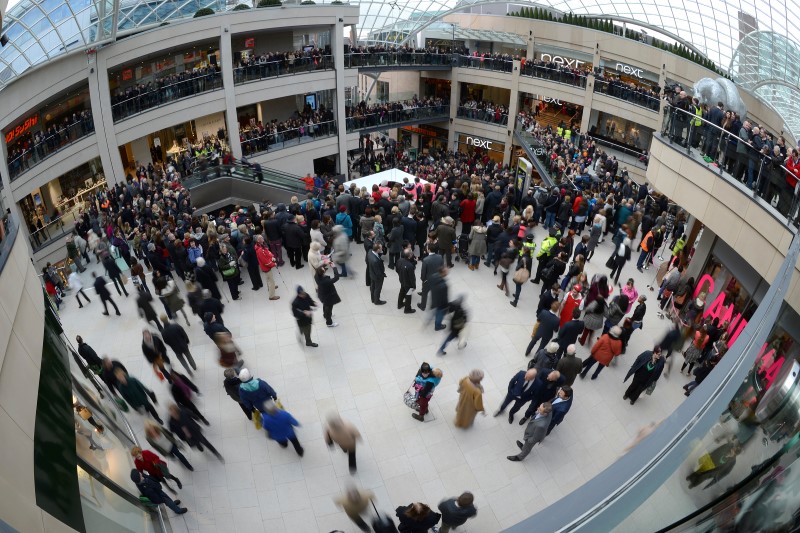By Howard Schneider
WASHINGTON (Reuters) - The U.S. economy may have hit its low point in the coronavirus crash but the rebound so far remains tepid, according to both broad indexes of activity and higher frequency counts of cellphone data and employee time information.
Indicators of retail foot traffic continued climbing last week. Cellphone location data from Unacast showed the nation overall now within around 20% of its 2019 level, and an expanding group of states where traffic is now higher than it was last year.
Last week that group branched from western states that had tended to impose less stringent business limits in response to the pandemic to include midwestern industrial states like Indiana and Wisconsin.
That increase comes with a footnote: Traffic last weekend dropped sharply, and particularly so in states like Minnesota and Georgia where protests against police violence toward African Americans broke out in major cities in response to the death of George Floyd while in Minneapolis police custody.
Cellphone data compiled by Safegraph also showed an increase, but at a slowed pace from the week before.
For a graphic on U.S. Reopening:
https://fingfx.thomsonreuters.com/gfx/editorcharts/bdwpkrnxgvm/index.html
The coronavirus pandemic has sickened more than 1.8 million in the United States and led to broad restrictions on activity through March and April that pushed the economy into recession and threw millions out of work.
Those restrictions are now being gradually lifted state by state, and as that happens officials are looking for signs of an economic rebound.
So far the picture is mixed.
For a graphic on Hitting Bottom:
https://fingfx.thomsonreuters.com/gfx/editorcharts/qzjvqweavxm/eikon.png
Broad indexes of activity compiled by Goldman Sachs (NYSE:GS) and the New York Federal Reserve showed the economy continuing near its bottom, with no clear sign of further decay but no clear upward trend yet either.
Despite the reopening, another 1.9 million filed for unemployment claims in the week ended May 30, while the number of continuing claims, reported with a one-week lag, increased slightly to 21.5 million.
For more on the data referenced here:

Unacast https://www.unacast.com/covid19/covid-19-retail-impact-scoreboard, Homebase https://joinhomebase.com/data/covid-19, Safegraph https://www.safegraph.com/dashboard, NYFed https://www.newyorkfed.org/research/policy/weekly-economic-index, ATLFed https://www.frbatlanta.org/cqer/research/gdpnow
